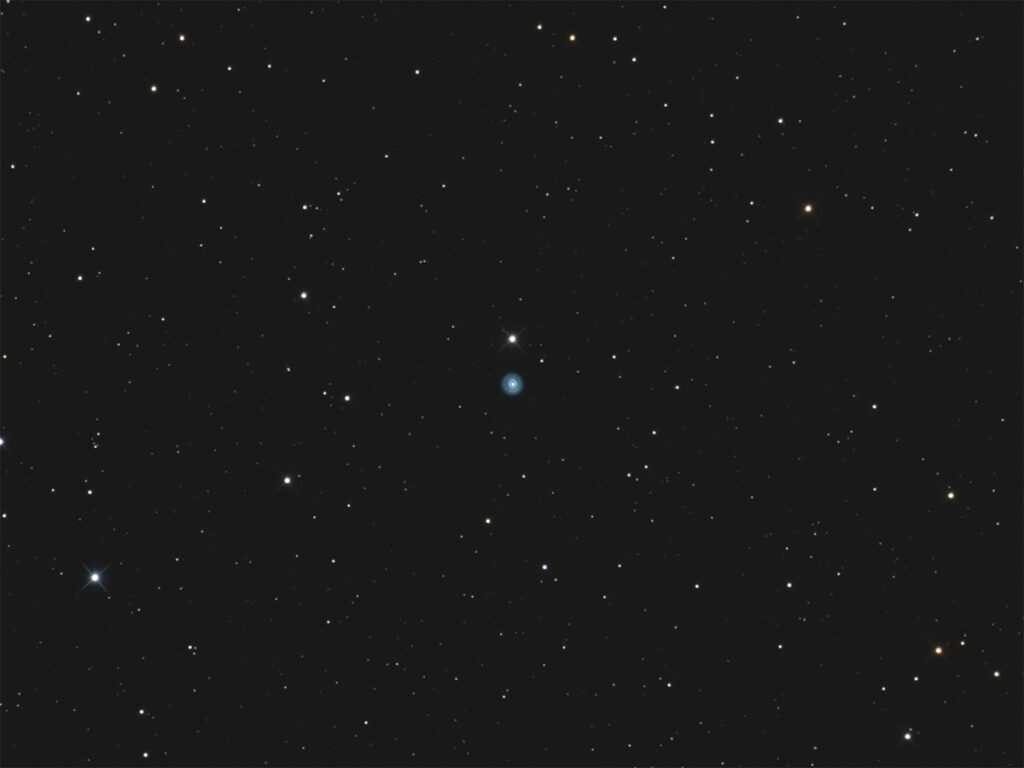
Telescope: Astro-Tech 8” f/8 Ritchey-Chretien, Orion Atlas EQ-G
Camera: QHY 367c Pro, -20C, Baader Mk III MPCC, GSO IR Blocking Filter
Guide scope: Astro-Tech 60mm, ZWO ASI120MM mini, PHD2
Exposure: 19x300sec, gain 2800, offset 50, saved as FITS, dithered every 2 images
Darks: 32, -20C, gain 2800, offset 50, saved as FITS
Flats: 64×0.3sec, Tee shirt flats taken at dusk
Average Light Pollution: Red zone, Bortle 8, fair transparency
Lensed Sky Quality Meter: 18.5
Stacking: Average, 1 sigma clip
White Balance: Nebulosity Automatic
Software: SharpCap Pro, Deep Sky Stacker, Nebulosity, Photoshop
NGC 2392, Eskimo Nebula, is a wonderful little planetary nebula Gemini. Visually this nebula looks much like its nickname, even in a small telescope. Planetary nebula are formed when a star sheds its outer shell as it nears the end of its life. The core collapses into a fiercely bright white dwarf whose intense radiation sets the expanding shell of gas aglow, often with a beautiful blue/green color. The layered structure of NGC 2392 shows that it has experienced several shedding events.
The Eskimo Nebula is currently well placed high in the east during the early evening. (Photo credit: John Graham, 2/13/2023)
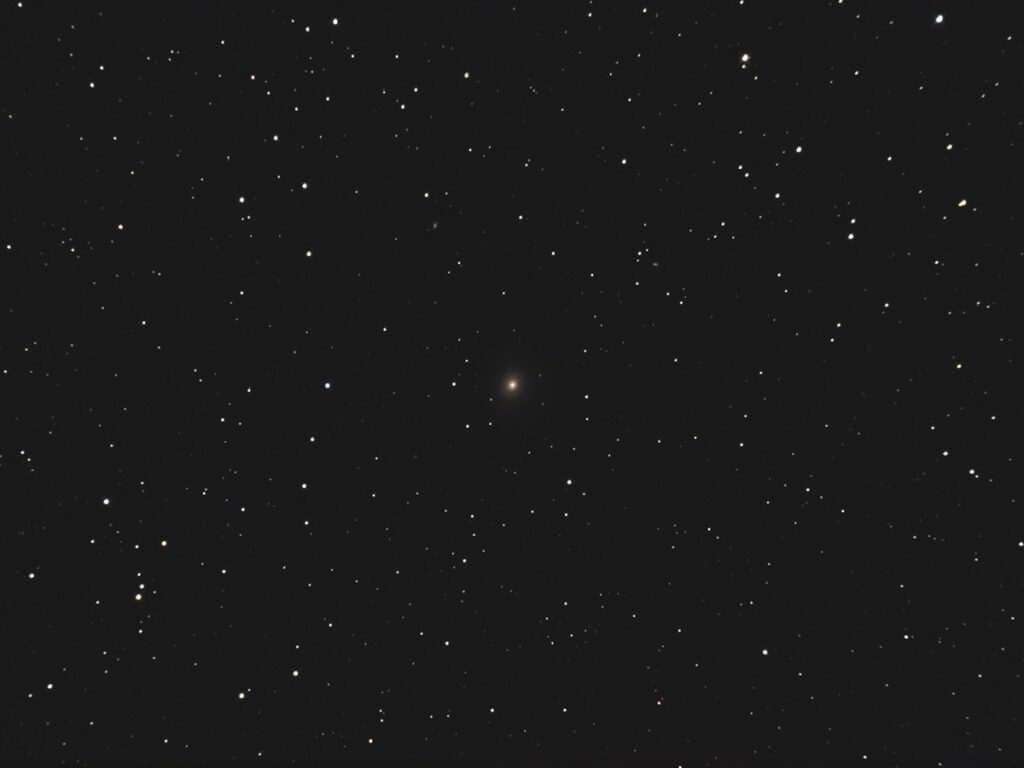
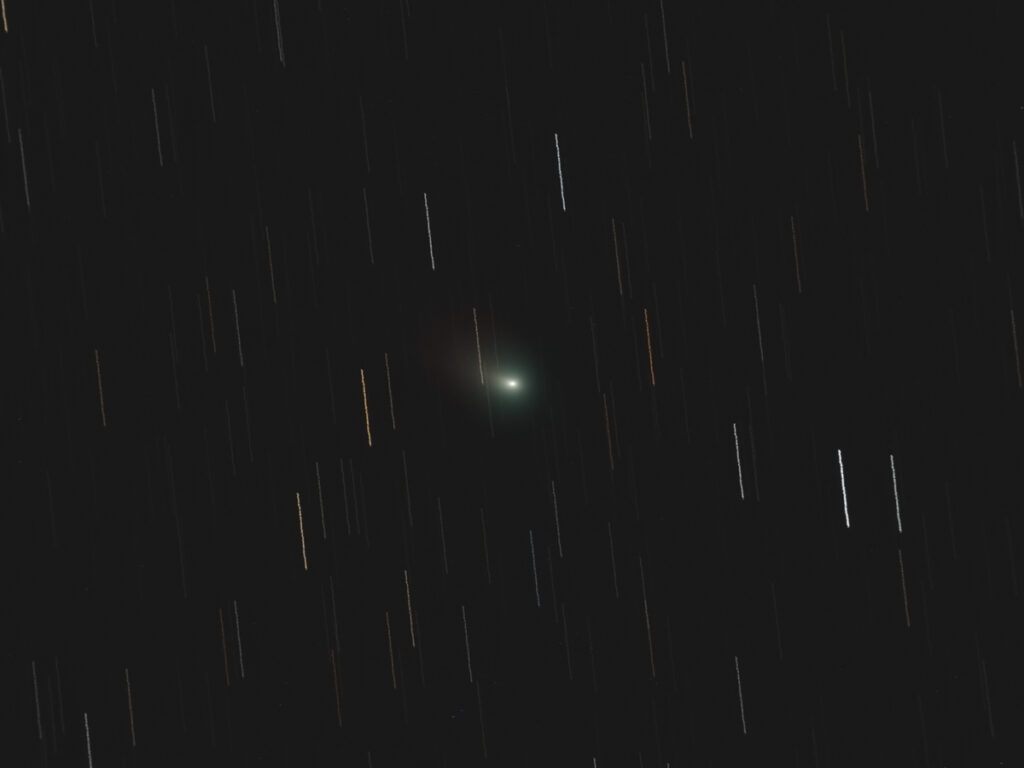
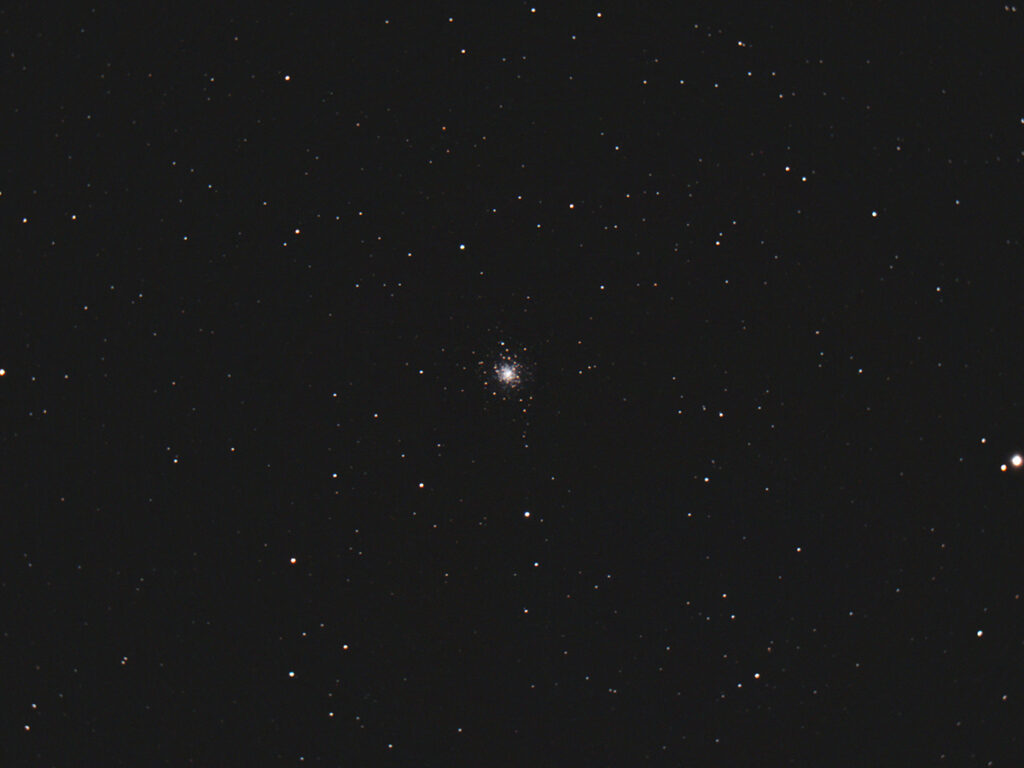
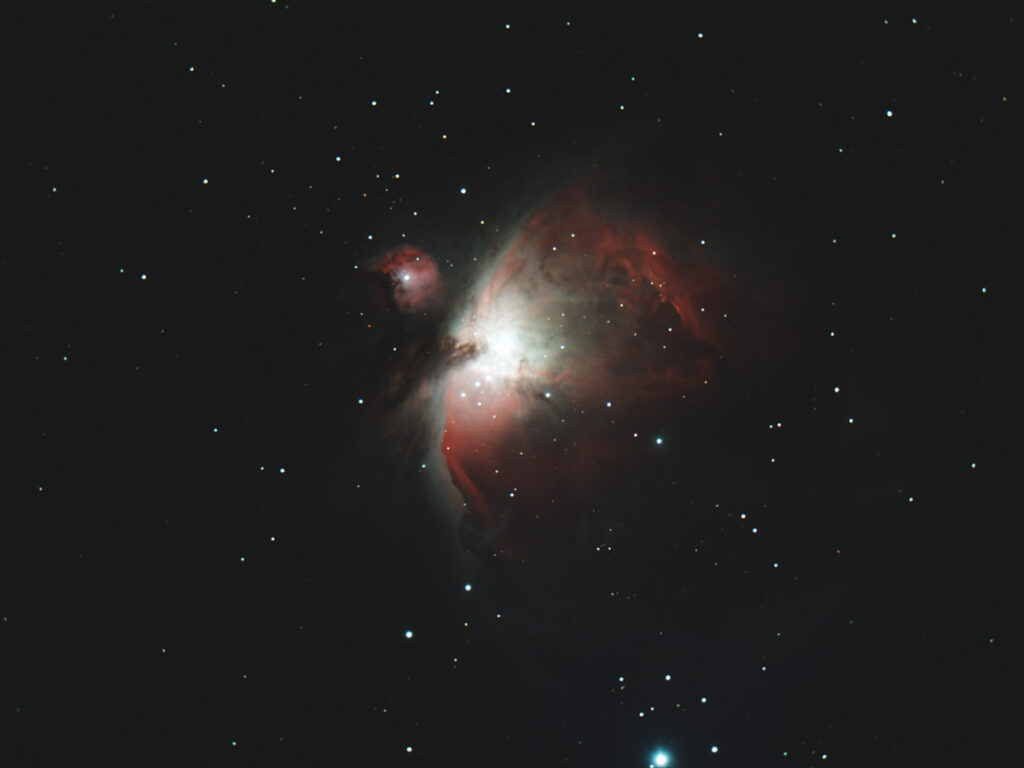
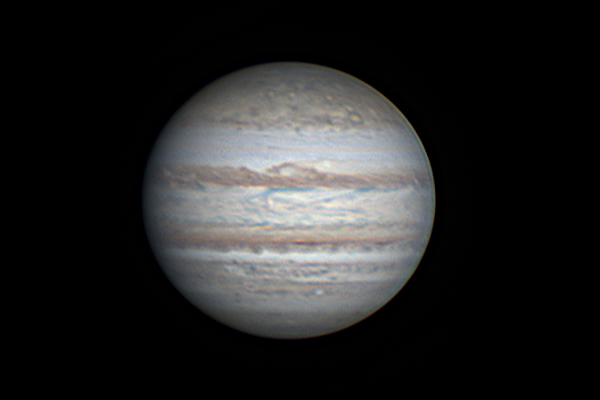
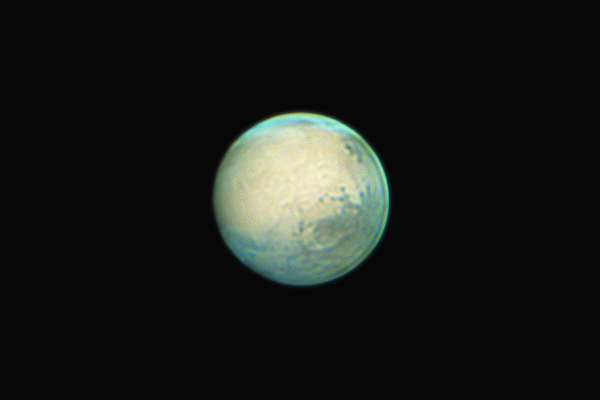
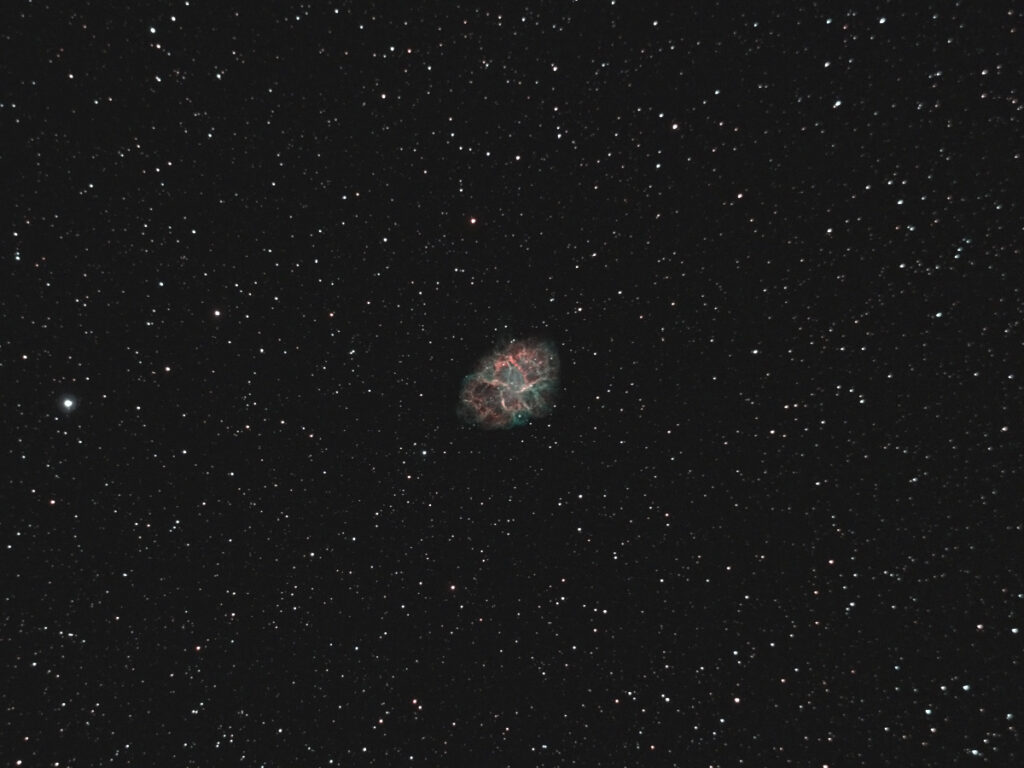
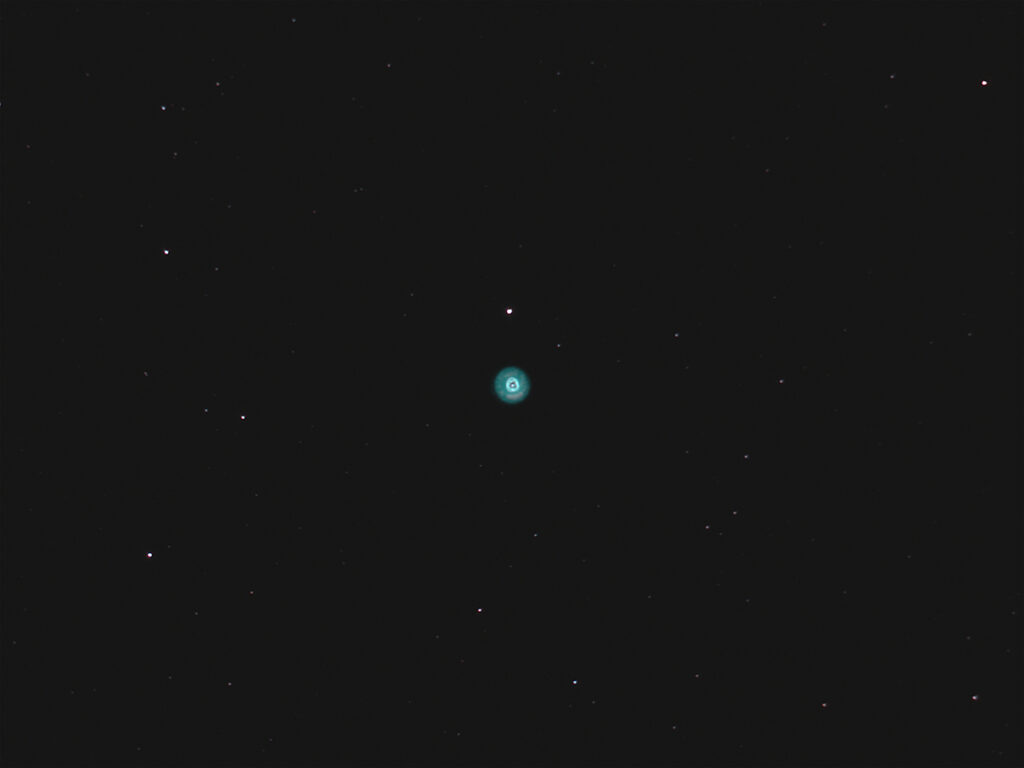
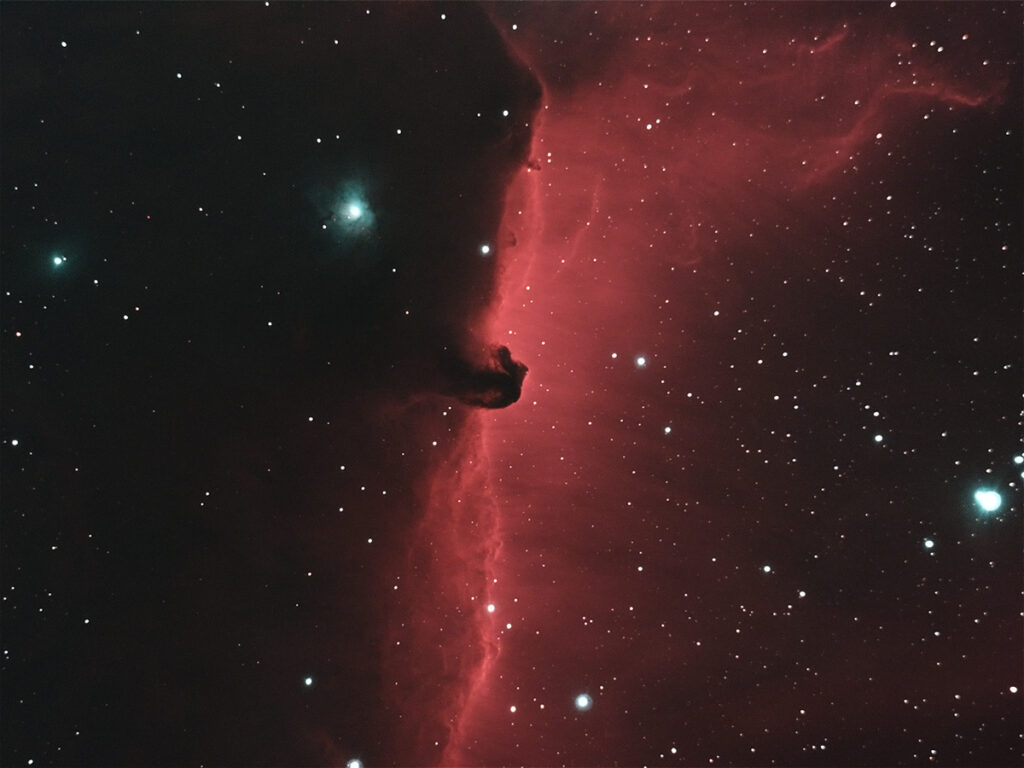
Recent Comments